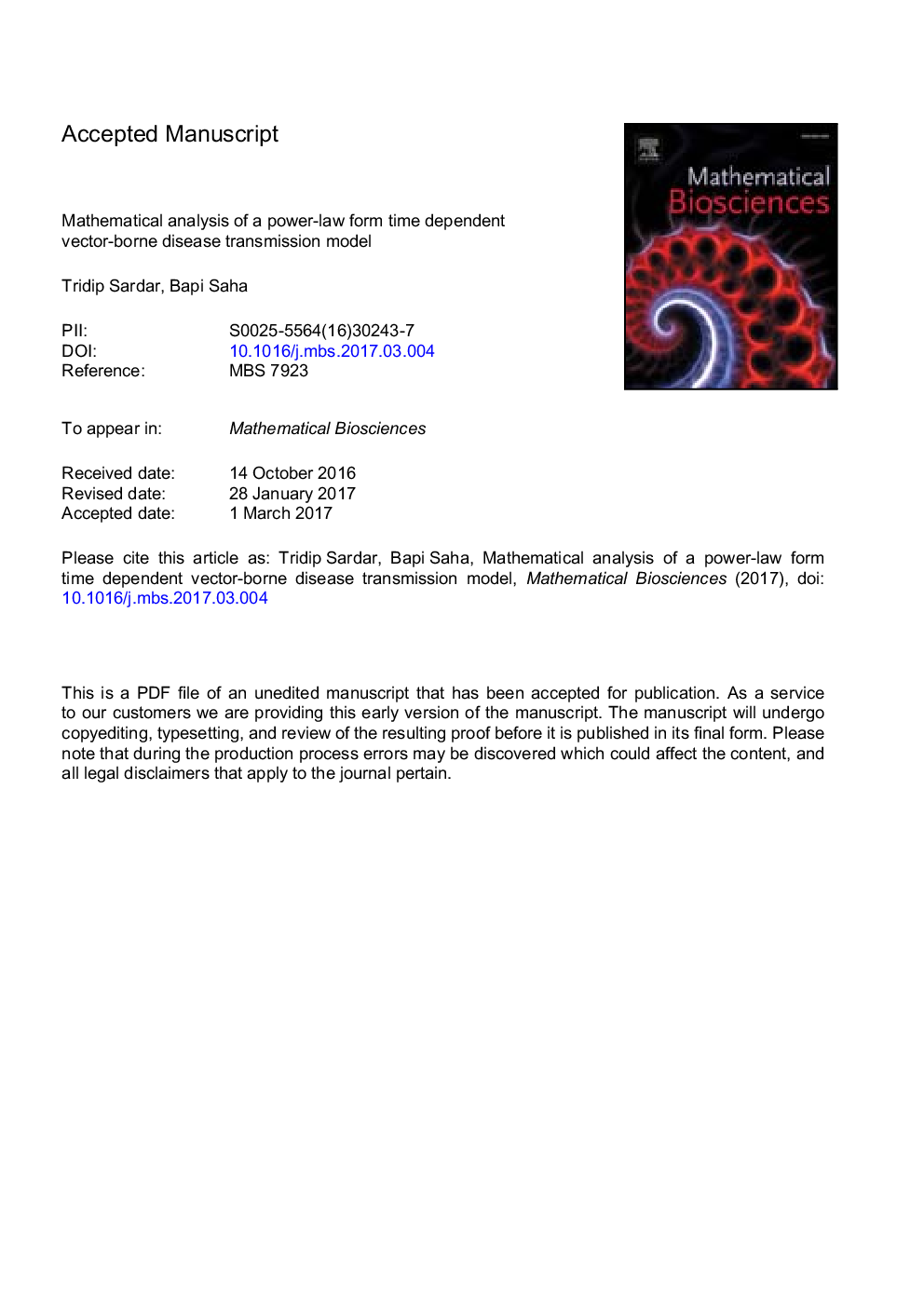| کد مقاله | کد نشریه | سال انتشار | مقاله انگلیسی | نسخه تمام متن |
|---|---|---|---|---|
| 5760463 | 1623992 | 2017 | 45 صفحه PDF | دانلود رایگان |
عنوان انگلیسی مقاله ISI
Mathematical analysis of a power-law form time dependent vector-borne disease transmission model
ترجمه فارسی عنوان
تجزیه و تحلیل ریاضی یک مدل انتقال قدرت بیماری بردار وابسته به زمان وابسته به قدرت قانون
دانلود مقاله + سفارش ترجمه
دانلود مقاله ISI انگلیسی
رایگان برای ایرانیان
کلمات کلیدی
مدل بردار بردار، مشتق مکرر، ثبات جهانی، برآورد پارامتر،
موضوعات مرتبط
علوم زیستی و بیوفناوری
علوم کشاورزی و بیولوژیک
علوم کشاورزی و بیولوژیک (عمومی)
چکیده انگلیسی
In the last few years, fractional order derivatives have been used in epidemiology to capture the memory phenomena. However, these models do not have proper biological justification in most of the cases and lack a derivation from a stochastic process. In this present manuscript, using theory of a stochastic process, we derived a general time dependent single strain vector borne disease model. It is shown that under certain choice of time dependent transmission kernel this model can be converted into the classical integer order system. When the time-dependent transmission follows a power law form, we showed that the model converted into a vector borne disease model with fractional order transmission. We explicitly derived the disease-free and endemic equilibrium of this new fractional order vector borne disease model. Using mathematical properties of nonlinear Volterra type integral equation it is shown that the unique disease-free state is globally asymptotically stable under certain condition. We define a threshold quantity which is epidemiologically known as the basic reproduction number (R0). It is shown that if R0 > 1, then the derived fractional order model has a unique endemic equilibrium. We analytically derived the condition for the local stability of the endemic equilibrium. To test the model capability to capture real epidemic, we calibrated our newly proposed model to weekly dengue incidence data of San Juan, Puerto Rico for the time period 30th April 1994 to 23rd April 1995. We estimated several parameters, including the order of the fractional derivative of the proposed model using aforesaid data. It is shown that our proposed fractional order model can nicely capture real epidemic.
ناشر
Database: Elsevier - ScienceDirect (ساینس دایرکت)
Journal: Mathematical Biosciences - Volume 288, June 2017, Pages 109-123
Journal: Mathematical Biosciences - Volume 288, June 2017, Pages 109-123
نویسندگان
Tridip Sardar, Bapi Saha,
